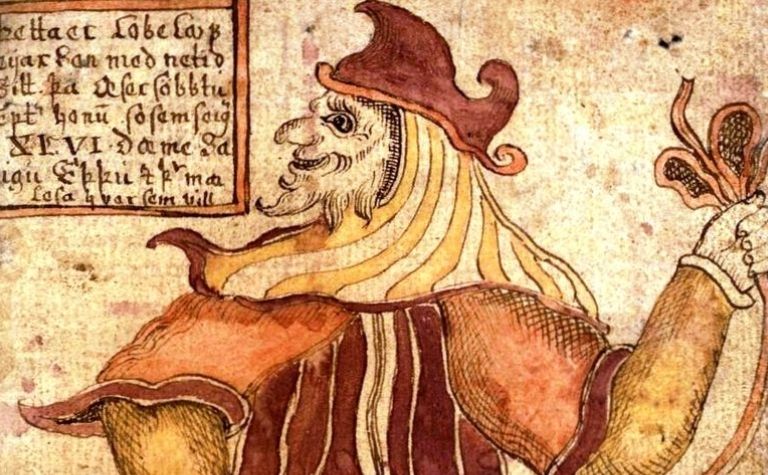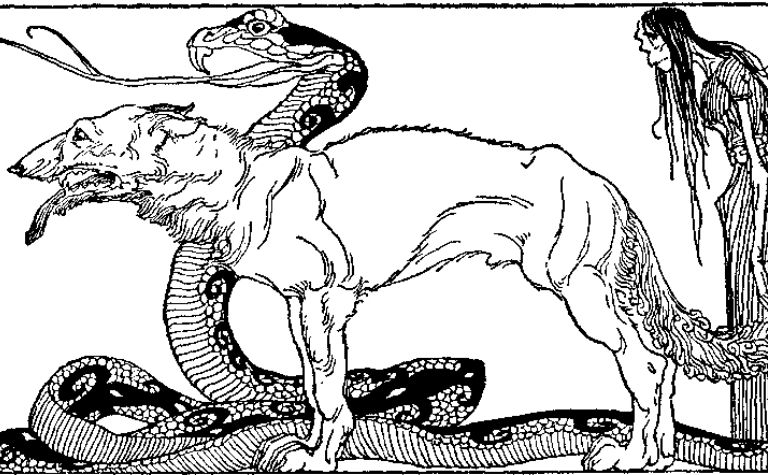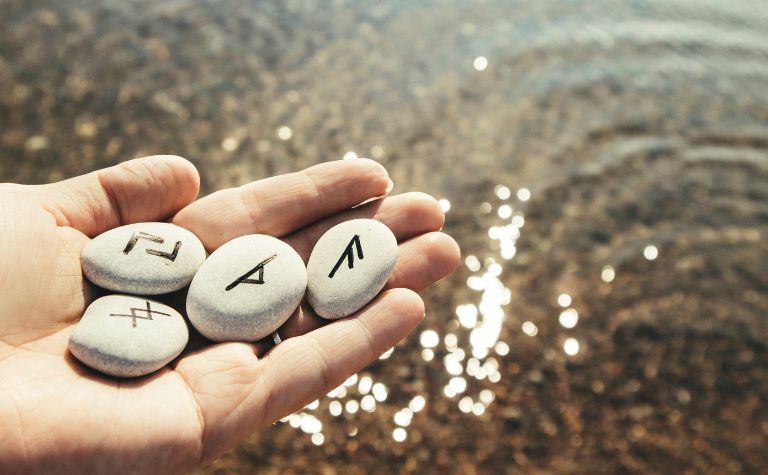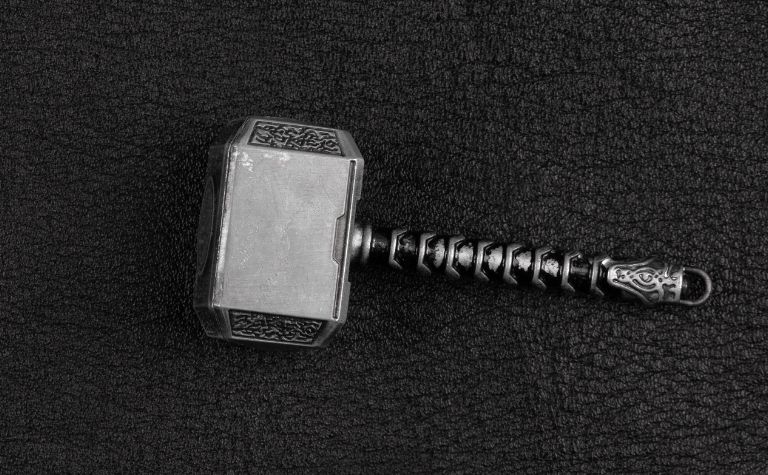Loki is a fascinating figure in Norse mythology. There are many different aspects to his personality, and he often does more harm than good for those around him.
Many people wonder if the Marvel Cinematic Universe (MCU) depicts him accurately.
For example, people wonder if Loki and Thor are really brothers.
In summary, Loki and Thor are not brothers in Norse mythology. Loki’s parents were Farbauti, the Frost Giant, and Laufey, while Thor’s parents were Odin and Jörd, a giantess.
In Norse mythology, Loki is portrayed as Odin and Thor’s companion, meaning he didn’t have blood relations with either of the two.
Thanks largely to the MCU, many people have a different idea about the relationship between Loki and Thor, but the truth is that they don’t have any familial relationship in Norse mythology.
Read on to learn more about the origin of this misconception that they are brothers and to gain insights into their actual relationship.
Also, see Is Thor Immortal In Norse Mythology? to learn more.

Thor and Loki’s Brotherly Relationship
Thor and Loki, two of the most iconic characters in the Marvel Cinematic Universe (MCU), share a unique and complex brotherly relationship that has captivated audiences worldwide.
As the sons of Odin, the king of Asgard, they have grown up together, experiencing the highs and lows of life as royalty in the realm of the gods.
Their relationship is characterized by a mix of rivalry, camaraderie, and mutual respect. Despite their differences, they share a deep bond that has been forged through centuries of shared experiences.
Thor, the elder brother, is often portrayed as the strong and noble warrior, while Loki, the younger brother, is known for his cunning and mischievous nature.
Their contrasting personalities have led to many conflicts and disagreements, but they have also resulted in moments of genuine affection and understanding.
Throughout the MCU films, their relationship has evolved significantly. In the early films, Loki’s jealousy and desire for power often put him at odds with Thor.
He would frequently resort to deceit and trickery to achieve his goals, leading to tension and mistrust between the brothers.
However, as the films progressed, their relationship began to change. They started to understand and accept each other’s differences, and their interactions became more nuanced and layered.
Despite their frequent clashes, Thor and Loki have also had moments of genuine brotherly love and support.
They have fought together against common enemies, saved each other from danger, and even shared moments of humor and levity.

Memorable Moments Between Thor and Loki
One of the most memorable moments between Thor and Loki occurred in the film “Thor: Ragnarok.” In this scene, the two brothers attempt to escape from the planet Sakaar by using their childhood trick called “Get Help.”
Thor suggests the plan, and although Loki is initially reluctant, he eventually agrees. The trick involves Thor pretending that Loki is injured and needs assistance.
When they approach the guards, Thor suddenly throws Loki at them, taking them by surprise and allowing the brothers to overpower their foes.
This scene is particularly memorable because it showcases their playful dynamic and their ability to work together despite their differences.
Another unforgettable moment between Thor and Loki takes place in “Thor: The Dark World.” In this scene, the two brothers are escaping from Asgard, and Loki decides to have some fun by using his shapeshifting abilities.
He transforms Thor into Lady Sif and himself into various characters, including Captain America.
This humorous scene highlights Loki’s playful and mischievous nature and provides a moment of levity amidst the action.
It also shows that despite their rivalry, the brothers can still share moments of fun and laughter.
In “Avengers: Infinity War,” there is a poignant moment between Thor and Loki that stands out.
After being captured by Thanos, Loki attempts to deceive the Mad Titan by pretending to pledge his loyalty.
However, he uses this as a ruse to try and attack Thanos. Unfortunately, his plan fails, and Thanos kills him.
As Loki dies, he looks at Thor and says, “I assure you, brother, the sun will shine on us again.” This emotional scene showcases the depth of their bond and the love they have for each other.
It is a powerful moment that highlights the complexities of their relationship and the sacrifices they are willing to make for one another.

Loki’s Mischievous Acts
Loki’s mischievous acts are a defining characteristic of his personality in the Marvel Cinematic Universe.
He is known for his cunning and trickery, often using these traits to achieve his goals or to amuse himself.
One of his most notable acts of mischief occurs in “Thor: Ragnarok,” where he impersonates Odin and rules Asgard in his stead.
In “Thor: The Dark World,” Loki showcases his playful side by shapeshifting and transforming Thor into Lady Sif.
He also famously turns himself into a snake to scare Thor in their childhood, as recounted by Thor in “Thor: Ragnarok.”
These acts highlight Loki’s playful and deceptive nature, making him a unique and intriguing character in the MCU.
Loki’s Sacrifice for Thor
Loki’s sacrifice for Thor is a powerful moment in the Marvel Cinematic Universe, showcasing the depth of their brotherly bond.
In “Avengers: Infinity War,” Loki faces Thanos and ultimately chooses to sacrifice himself to save Thor.
In his final moments, Loki looks at Thor and reassures him, saying, “I assure you, brother, the sun will shine on us again.”
He then refers to himself as “Odinson,” emphasizing their shared lineage.
Loki’s actions reveal his love for Thor and his willingness to give his life for his brother.
This sacrifice highlights the complexities of their relationship and the strength of their connection.

Who Is Loki’s Brother in Norse Mythology?
Helblindi and Byleistr are Loki’s brothers in Norse mythology, not Thor. Both of his brothers were Jötnar, just like Loki.
Their mother’s name was Laufey, although, in some versions of the myths, she’s referred to as Nál, which comes from an Icelandic word that means “needle.”
However, Helblindi and Byleistr came from an unknown father who was reportedly either a Frost Giant or a Rime-Thurses.
Although the more popular interpretation of Norse mythology is that Thor and Loki are not brothers, many people assume that they are.
Where does the misconception that Loki and Thor are brothers come from? The main reason is that the Marvel Cinematic Universe.
In Norse mythology, Odin and Loki swore an oath that bonded them like brothers. Notably, Loki swore that he would not harm Odin or any of his children.
Similarly, Odin swore not to harm Loki. They mixed their blood and took solemn oaths, making them sworn brothers.
Additionally, Loki offers his services as a skilled craftsman-god and helpful adventurer for Thor’s endeavors on Earth or Asgard. That was their relationship.
However, in the Marvel Universe, Loki is adopted by Odin after being abandoned as a child.
In return for being taken in by his new family, he offers to help Thor when the God of Thunder needs such assistance and guidance on Earth or Asgard.
Since more people watched the Thor and Avengers movies than have read the ancient Norse myths, the Marvel version stuck, and now, most people assume the two gods are brothers.
Also, see Is Thor Good or Bad in Norse Mythology? to learn more.

Who Are Loki’s Other Family Members in Norse Mythology?
In Norse mythology, Loki’s other family includes his wife, Sigyn, and their children, Narfi and Vali.
He also had Fenrir, the wolf, Hel (or Hela), the ruler of Hel, and Jörmungandr, the world serpent, with the giantess Angrboda. He is also the mother of Svaðilfari, who he conceived in horse form.
According to both the Poetic Edda and the Prose Edda, Fenrir kills Odin at Ragnarok.
In addition, Loki bore Sleipnir to Svaðilfari, the horse of a giant who came to Asgard to build up the walls in exchange for Freya’s hand in marriage.
In contrast, Thor’s wife in Norse mythology is Sif, but it’s unclear if the two of them ever had any sons. Thor did help raise Sif’s first son, Ullr, and the two of them had a daughter named Thrud.
He met Járnsaxa at Utgardr during one adventure where she gave birth to their son Magni.
Thor was left holding onto the child when his companions ran off in terror because they thought it might be dangerous for them to travel together now that he had fathered an offspring on such an unusual woman and had a giantess in his company.
Thor also has another son, Modi, but his mother is never named in the sagas.
Also, see Who is Thor’s Wife in Norse Mythology? to learn more.
Who Are Thor’s Siblings in Norse Mythology?
Accounts of Thor’s parentage vary, but assuming he’s Odin’s son, Thor’s siblings are Baldr, Höðr, Víðarr, and Váli.
The eldest was the god Baldr, who was the son of Odin and Frigg and was mistakenly killed by his twin Höðr.
Váli avenges Baldr’s death, while Víðarr avenges their father’s death.
Although there’s no mention of Thor’s siblings in the Poetic Edda, they appear to have been known among Scandinavians in the Viking Age.
Most notably, Snorri Sturluson mentions them as part of a list of male descendants from Nór under each king’s name, apparently as a formality because their fame was already established by then.
Snorri mentions Baldr only briefly—a single sentence that tells how he was generally regarded as kind, generous-spirited and beautiful.
The account goes into much more detail about his death with vignettes about his funeral pyre, leaving a light so great that it could be seen in the world.
Baldr is portrayed as one who projectiles could never hurt – they rebounded upon hitting him. The only exception was mistletoe.
According to Snorri’s account, Loki tricked Höðr into throwing a spear with mistletoe at Baldr, leading to Baldr’s death.
Baldr’s death was a heavy blow to Odin. Baldr had been his favorite son, and Odin gave an emotional speech about how he looked forward to Baldr becoming king after himself.
Váli then takes up this role in Snorri’s account of Norse mythology; most notably, he avenges his brother by killing his murderer, Höðr.
According to some accounts, Váli was born and grew to become an adult within a day.
Víðarr was Thor’s only full brother, and it was with him that Thor had a showdown during the events of Ragnarök.
References:
[1] Odin – Britannica
[2] Loki – World History
[3] Vali – Wikipedia
